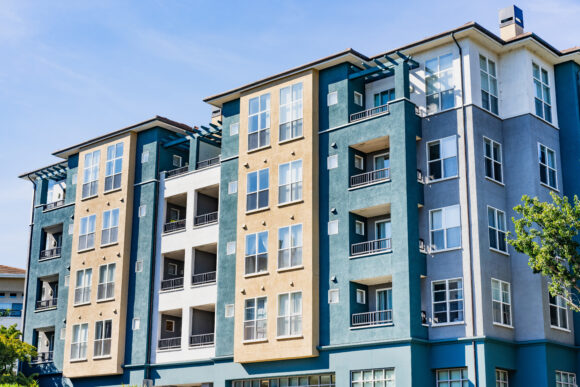The multifamily and rental property industries have faced quite an upheaval over the past few years, the impacts of which are certainly being felt by landlords and property managers. More than one national multifamily publication has stated policyholders are facing an average 30% increase from this time last year. There are multiple factors at play that have led to increasing premium costs and coverage limitations, none of which are expected to stabilize any time soon as premiums are expected to stay high well into 2024.
Unfortunately, the hard market that the multifamily industry is facing is due to a “perfect storm” of conditions.The current hard market has impacted landlords especially hard in states that have faced a mass exodus of many standard insurance carriers in the recent months – for instance, California, Texas, Louisiana and Florida – as they are no longer deemed as profitable for admitted carriers. Properties in other states are certainly not immune to facing the wrath of the current market.
The main culprit for premium increases has been attributed to the increase in both frequency and severity of natural disasters across the country and the secondary perils that follow. The last three years have led to the highest total payout for U.S. insurance carriers in recorded history. Wildfires have ravaged the West Coast, causing many carriers to put restrictions in place for buildings that are not only in, but adjacent to, wildfire-prone areas. Tropical storm frequency has expanded greatly throughout the Gulf Coast and up the East Coast, leading carriers to decide to piece out wind/hail coverage altogether, if they remain at all.
As it stands, Florida is the most difficult state in which to underwrite property, as storm claims have had the most extreme impact on the insurability of Florida as a whole.
Florida has been facing insurability issues not only due to the $10 billion-plus in tropical storm claims over the past couple of years, but the Champlain Tower tragedy also made insurers wary of both the literal and figurative stability of coastal properties.
The actuarial data that historically led to successful predictions in the estimated payout of catastrophe claims, and set rates based on such, has not been as reliable in recent years due to the increase in severity and frequency of claims, resulting in insurers and reinsurers having to prepare for the relative unknown.
For the rest of the country, the standard carriers remaining have placed stringent rules on the properties they deem as acceptable risks. A majority of standard carriers deciding to remain in the multifamily space have now put limits on the age of the structure, with most now implementing, at most, a 40-year-old maximum acceptability, which puts older properties at a disadvantage when going out to market. This has disparagingly impacted smaller landlords who are not in the position to finance new build constructions.
Additional factors are also being more heavily scrutinized now than in years prior, such as crime scores, wildfire and brushfire scores, and roof scores. For areas with higher crime scores, assault and battery limits are provided at a reduced sublimit or are excluded all together. For properties in high risk wildfire areas, property coverage is excluded altogether. Clients are also being denied property coverage if the algorithms state the roof condition is less than ideal.
Global inflation, continued fall-out from supply-chain issues, and increased timelines for construction projects have led to a rising cost of new construction, which means replacement costs have gone up. There is also increased scrutiny by insurers to make sure properties are insured to value. The increase in replacement costs has had a direct impact on policy premiums, as insurers are forced to raise the premiums to cover the increased costs.
Pivoting from property coverage to liability coverage, the U.S. also has a unique problem when it comes to social inflation, as we live in a highly litigious society that loves a lawsuit, frivolous or not. In the U.S., court cases typically result in higher payouts that favor plaintiffs, and due to the litigious nature of our society, there is also consistent legal system abuse, astronomical court costs and attorney fees, and a higher instance of insurance fraud and abuse.
To say multifamily is becoming uninsurable is a stretch, albeit not a large one. However, it is certainly an industry that is facing the brunt of the fallout from the current hard market.
Many landlords have had to pivot their approach to insuring their investments by drastically increasing deductibles, limiting coverage, and being forced into switching to excess and surplus (E&S) carriers to keep coverage in place.
While it is predicted that due to the stabilizing economy, prices aren’t expected to increase over the next year, those in the rental industry won’t be seeing a reprieve any time soon.
Agents should be preparing their policyholders for the inevitable.
Was this article valuable?
Here are more articles you may enjoy.



 Relief But Questions on Agents’ Duties to Insureds After Florida Court Ruling
Relief But Questions on Agents’ Duties to Insureds After Florida Court Ruling  ’60 Minutes’ Homeowners Ask Court to Force DFS to Divulge Heritage Probe Info
’60 Minutes’ Homeowners Ask Court to Force DFS to Divulge Heritage Probe Info  Howden US Tells Judge Brown & Brown Employees Fled Due to ‘Mistreatment’
Howden US Tells Judge Brown & Brown Employees Fled Due to ‘Mistreatment’  FBI Involved After Two Florida Injury Lawyers Go Missing From Fishing Trip
FBI Involved After Two Florida Injury Lawyers Go Missing From Fishing Trip 



